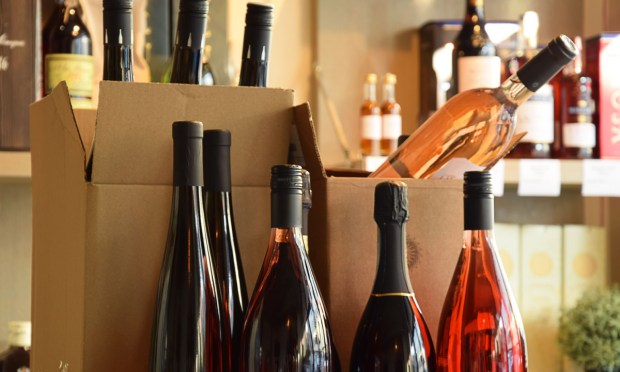Uber Eats Expands Alcohol Selection to Boost New Verticals’ Margins

As aggregators seek to embed their offerings more deeply in consumers’ day-to-day routines, Uber is tapping Hy-Vee’s alcoholic beverage selection to drive adoption of its non-restaurant verticals while boosting basket size.
On Friday (Aug. 11), the mobility and delivery company announced that Uber Eats is partnering with Midwestern grocery chain Hy-Vee to provide delivery from more than 260 of the latter’s locations, including its liquor stores.
“Hy-Vee is a beloved hometown brand, and we’re thrilled to welcome them onto Uber Eats,” Christian Freese, Uber’s head of grocery and new verticals for the U.S. and Canada, said in a statement. “Together we know we can make it easier than ever to have groceries and alcohol items delivered on-demand to doorsteps across the Midwest.”
Uber has been expanding its alcoholic beverage selection for years, having acquired on-demand beer, wine and spirits delivery platform Drizly in early 2021. This latest move comes as Uber Eats looks not only to drive adoption of its non-restaurant offerings but also to boost the unit economics with higher-ticket categories, and alcoholic beverages can certainly drive up basket size.
“The first new vertical category that we penetrated was the convenience category. This is a small shopping cart, $20, $30. … We’re now much more focused on grocery. These are large basket sizes, appointment viewing, coming back every week,” Uber CEO Dara Khosrowshahi told analysts on the company’s earnings call earlier this month.
Khosrowshahi noted that the company intends to drive adoption of add-ons, enabling consumers to tack additional items such as alcoholic beverages onto their restaurant orders to both boost basket size and drive adoption of these non-restaurant verticals.
The company did not share information about Drizly’s performance independent of overall delivery sales in its latest earnings report, but a presentation shared with analysts did note that 13% of delivery customers purchased from non-restaurant merchants.
The move to expand Uber Eats’ selection with additional verticals may also drive usage. Our survey of nearly 2,000 U.S. consumers in June for the Connected Dining series reveals that about half of all aggregator customers (49%) use Uber Eats, trailing well behind the nation’s leading third-party food delivery service, DoorDash, at 77%, but far ahead of second runner-up Grubhub, at 35%.
Friday’s press release notes that alcoholic beverage delivery is only available in “select cities.” Indeed, the category poses challenges for eCommerce players, given the different regulations in different geographies.
“Alcohol is relatively under-enabled versus other verticals. … That owes a lot to the three-tier system in the United States coming out of prohibition and the regulatory framework that has created a lot of impositions on the product category itself,” Zac Brandenberg, co-founder and CEO of alcohol eCommerce platform DRINKS, told PYMNTS in a recent interview. “So, [the space is] really young in many, many ways, especially compared to other products that you can buy, and also really immature when you think about how large the market is.”
DoorDash, for its part, also continues to expand its alcoholic beverage delivery selection, reporting in May that adoption of eCommerce options in the category is growing and that alcohol boosts grocery store basket sizes by 30% and convenience store basket sizes by 50%.
Last fall, Grubhub announced a partnership with Gopuff to sell from the latter’s dark stores through the aggregator’s marketplace, adding Gopuff’s considerable alcohol inventory to its platform.

